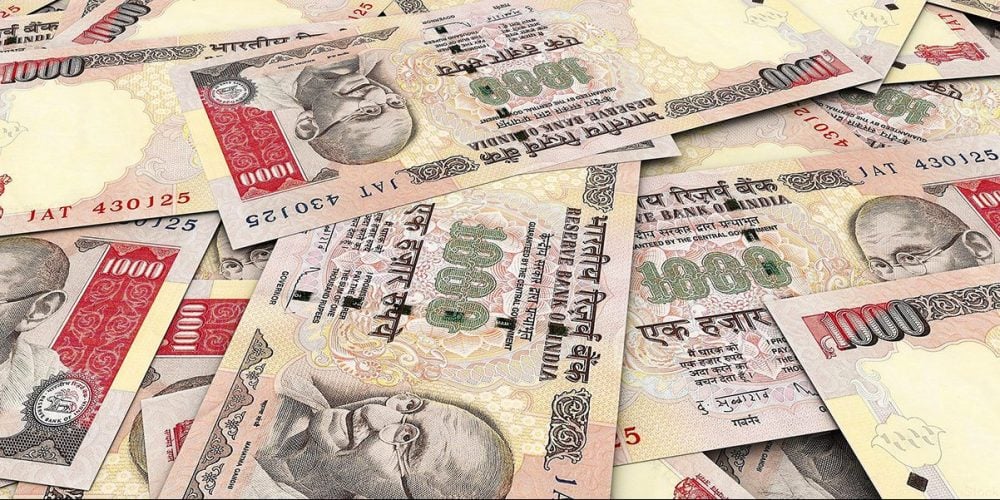A case study in going cashless – India

Overnight, India, a country with 1.3 billion in population, became a predominantly cash-less country, switching to mobile-based digital payments. And the government has even more ambitious plans – to eliminate credit and debit cards by 2020. How did this all happen?
India had been a country where over 90 percent of the transactions were cash-based. There are fewer than 25 million credit cards for a population well over a billion. Only 5% of personal consumption expenditure took place digitally. The 600 million debit cards in circulation were used mostly for ATM withdrawals. The low use and slow growth of credit cards and POS terminals were due to the high cost of infrastructure relative to the cost of the transactions. A dinner of dumplings purchased on the streets of New Delhi goes for a bit less than 50 cents a plate. It costs less than $2 for a watch repair near Connaught Place.
With a nearly completely cash-based society came problems. Corruption, counterfeiting, and so-called black money, the unaccounted-for cash on which tax is not paid, was estimated to account for as much as a third of missing tax revenue in India.
On November 8, Prime Minister Narendra Modi announced that India’s highest-value bills, the 1000 and 500 rupee notes (worth about $15 and $7.50) would cease being legal tender the next morning. These bills represented 80% of the currency in circulation, 15.4 trillion rupees, or about $250 billion USD. The old currency could be exchanged for new bills, with banks tracking individuals and exchange amounts. To be effective, the move had to be a closely guarded secret until the last minute, to prevent those holding black money from unloading it before the ban went into effect — the morning after the decision was announced. As a result, the government did not print enough replacement cash in time for the change, and it continues to struggle to do so fast enough, creating a cash shortage that strangled large sectors of the economy and caused the biggest change to payments in the country’s history.
While the aim was to vanquish “black money,” it ended up being the best thing to happen to India’s nearly non-existent digital payments industry by catapulting an antiquated economy into the 21st century.
Immediately following the overnight surprise currency change, called demonetization, India experienced an acute shortage of bills to replace the large-denomination notes that were banned. There were numerous reports of people waiting in line for hours at banks or A.T.M.s, only to find that the machines are out of cash.
Out of the cash shortage mayhem, some digital payments solutions emerged.
Paytm was one of the earliest success stories. Within hours, Paytm designed full-page ads to run in the biggest newspapers, proclaiming “Ab ATM Nahi, Paytm Karo” — no ATMs now, use Paytm. It rolled out its app in 10 Indian languages and continues to sign up merchants by the thousands. It announced a zero transaction fee for merchants on mobile payments and no-fee money transfers from Paytm to bank accounts we well as a DIY kit for novice neighborhood merchants and hawkers. In the few months since Mr. Modi’s Nov 9 surprise announcement, it already has a user base of 150 million and daily transactions have averaged 7 million, moving more money in mobile transactions than the “combined average of all credit and debit cards in India,” the company said. It continues to add about 70,000 merchants a day, and about half a million users a day.
To use the service, a smartphone is not required. Customers and merchants need to register their mobile numbers with Paytm and set their four digit Paytm PIN. They can then enter the recipient’s mobile number, amount and their Paytm PIN to successfully transfer the money from the customer’s Paytm wallet to a merchant’s wallet, or from the merchant’s wallet to the supplier’s wallet.
MobiKwik, a fledgling start-up that had been around since 2009, whose backers include Sequoia Capital, Cisco Investments, and American Express added 50 million users since November. “All the reluctance and friction in the adoption of digital payments has vanished overnight. We are updating our numbers every day as usage is going through the roof.”
Transaction charges are likely to remain low because, unlike the card systems that requires significant investment in PoS machines and other infrastructure, the mobile-based system has no such requirements.
Customers can do day-to-day transactions using their prepaid mobile wallets. Street merchants are now able to receive digital currency without deploying physical POS terminals or other infrastructure.
An added benefit has also emerged – the ability to obtain commercial credit lines. Merchants who preferred all cash businesses to hide their income have found that when they accept digital payments, the income trail makes them eligible for credit from the formal sector at much lower interest rates. In addition, the merchants are able to obtain other products like insurance policies. This access to cred lines allows the merchant to grow their business further. “Credit is the killer app of digitalization.”
India still remains a predominantly cash-based society; old habits are hard to break. But in only 4 months, mobile payments account for approximately 5% of all transactions, and that number continues to rise. Compare that with less than 1% for the U.S.
The fintech opportunity in India is now looking huge
As if the move to digital payments wasn’t huge, the government has even more ambitious plans – to eliminate plastic by 2020 and switch to biometric-authenticated payments.
Amitabh Kant, the head of a government-run policy institute, wants to take “the biggest technological leap ever in the history of mankind.” He claims that the country could completely eliminate the need for credit cards, debit cards and ATMs by 2020. Even the growing popular mobile wallet payments could be totally redundant by 2020. Instead, all Indians will need for transactions is their thumb or eye.
One of the unique reasons why this could actually happen in India is that nearly 1.1 billion of India’s 1.3 billion people have already registered their biometric data under the government’s unique identification program. The government is working with vendors to develop portable fingerprint scanners that cost about 2,000 rupees ($30) each. These would require smartphones and mobile internet connectivity, which is still scarce in many parts of India. More than 70% of Indians don’t have smartphones.
But given India’s drive to modernize its payments technology and associated infrastructure, this could actually happen.
Sources:
http://money.cnn.com/2017/01/19/technology/india-cash-biometric-payments-davos/
https://www.nytimes.com/2016/12/13/world/asia/india-cash-electronic-payments.html?_r=0





